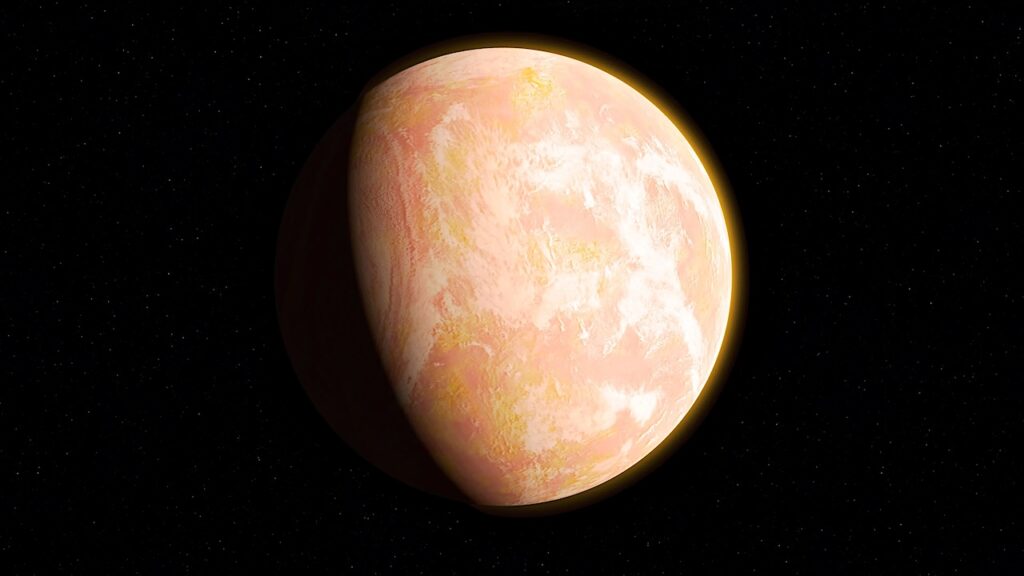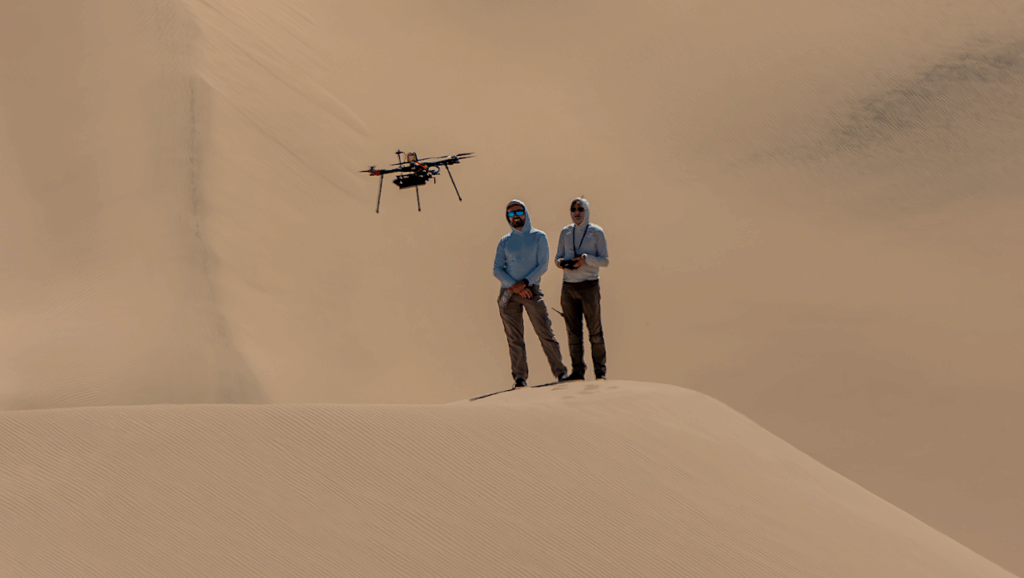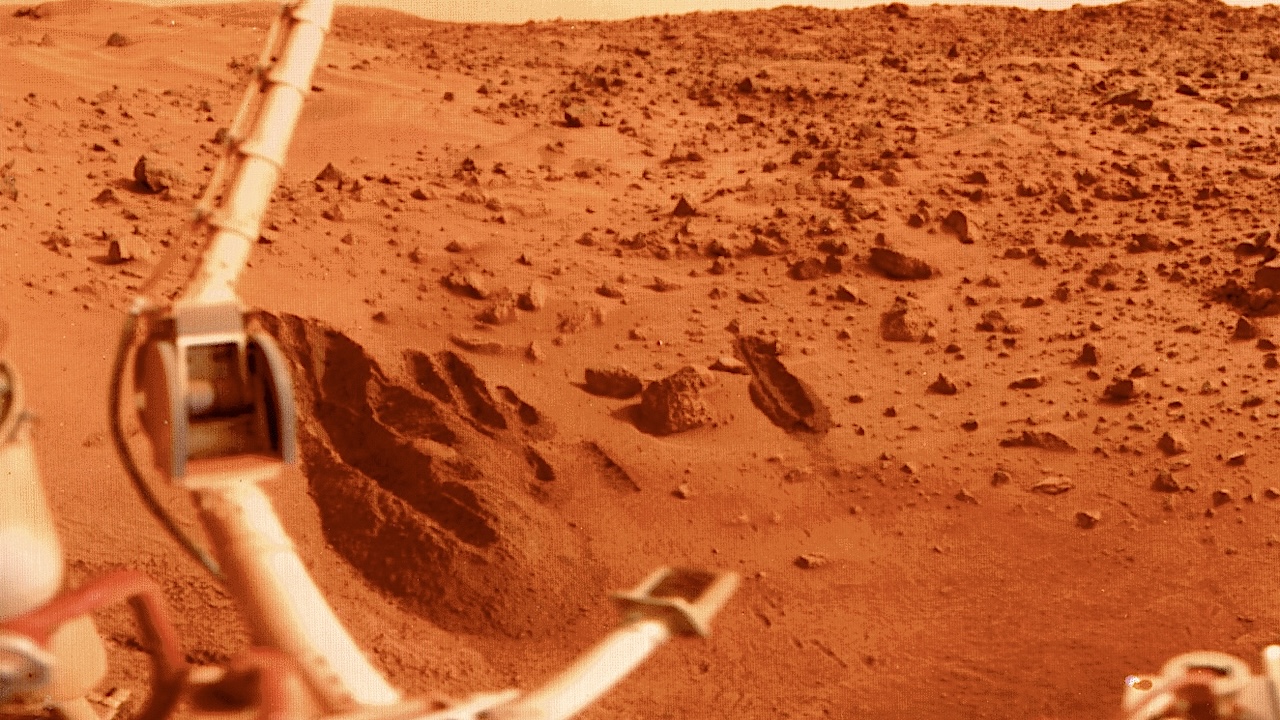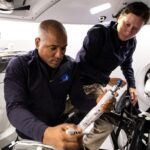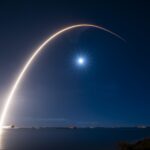Now Reading: Identifying Habitable Exoplanets With Radio Telescopes On The Lunar Farside
-
01
Identifying Habitable Exoplanets With Radio Telescopes On The Lunar Farside
Identifying Habitable Exoplanets With Radio Telescopes On The Lunar Farside
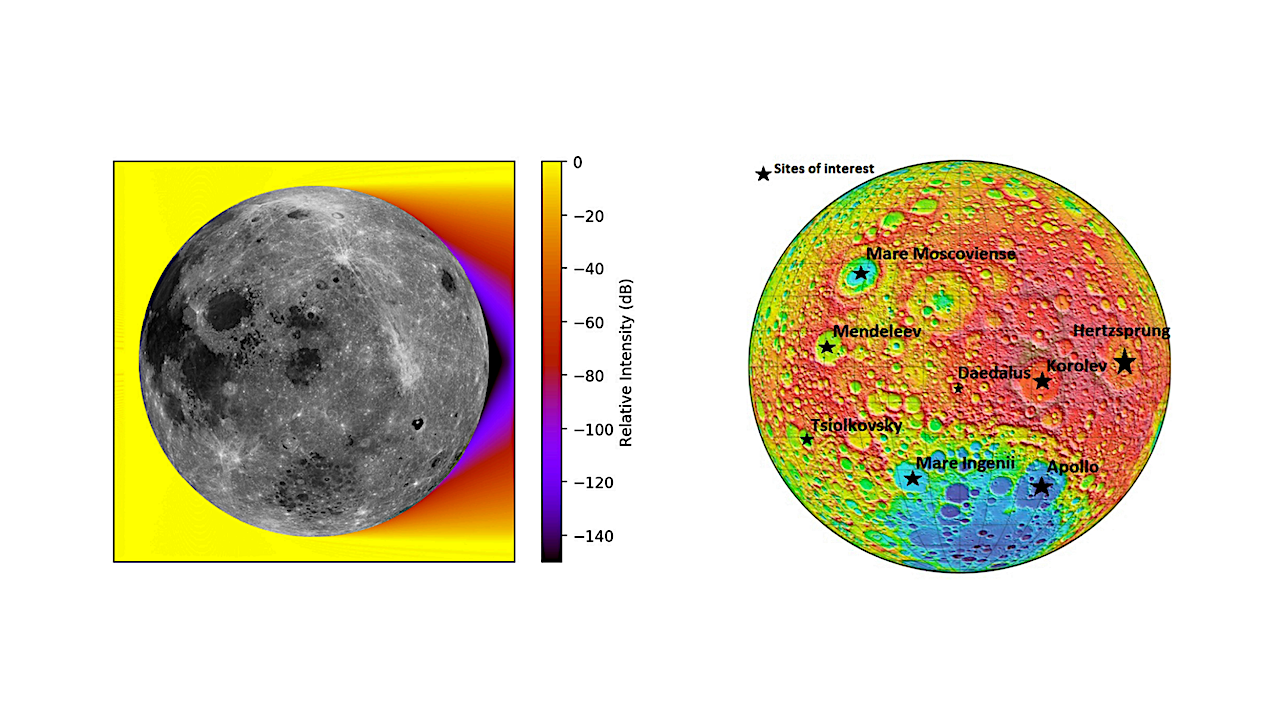
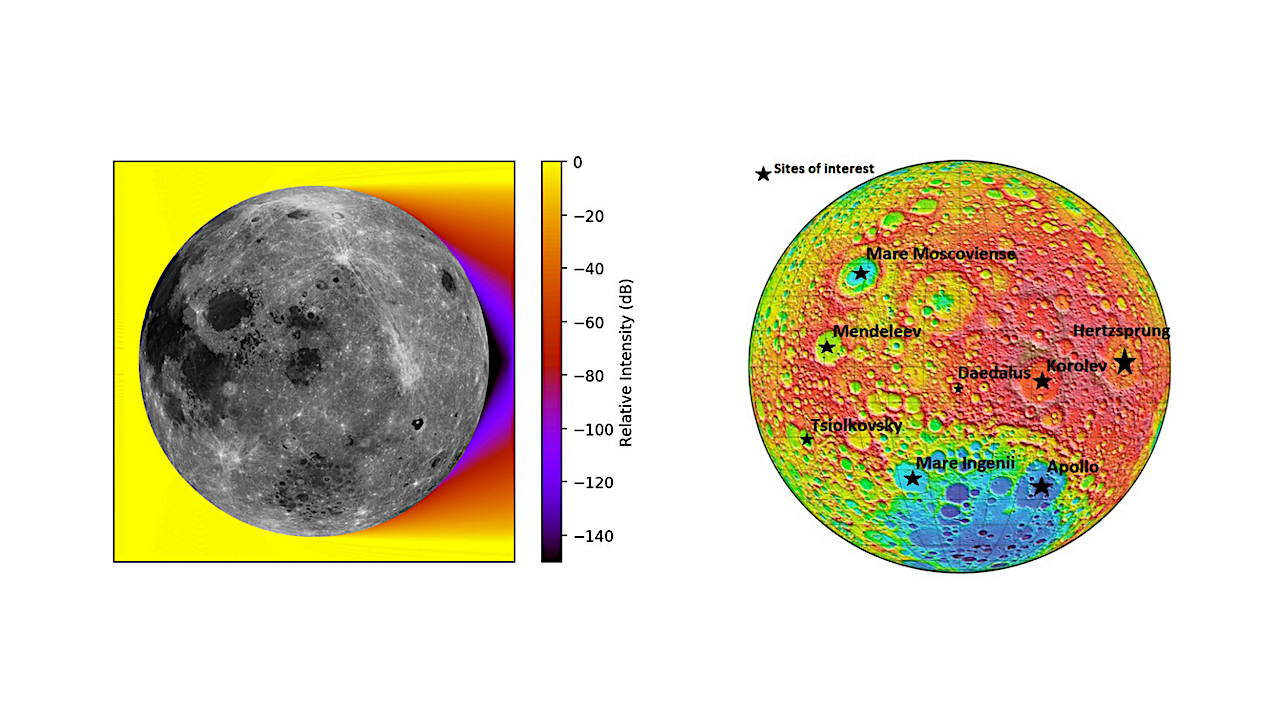
(left) Electromagnetic model showing the suppression of AKR and Earth transmitters on the far side of the Moon (Bassett et al. 2020). (Right) Eight candidate sites on the farside identified in Krolikowski & Elvis 2024 for a lunar radio array considering available area and surface smoothness. Further work is necessary to downselect to a single site, potentially through contributions of human exploration to site surveys. — astro-ph.IM
The search for habitable conditions beyond Earth is a top priority in astrophysics.
The discovery of habitable exoplanets beyond our solar system will require a suite of instruments providing long-term monitoring for detection (e.g. with space and ground-based radial velocity observations), spectroscopic characterization of atmospheric and surface properties, and eventually deep chronograph-aided observations from e.g. JWST, Roman Space Telescope, and the Habitable Worlds Observatory (HWO).
Detection of exoplanet magnetospheres is necessary to identify the most promising targets for follow-up characterization of biosignatures with these assets, and to provide an ensemble of objects for studies of magnetospheric conditions and atmospheric composition. Only observations of low-frequency radio emission will distinguish exoplanet magnetospheres (Hallinan et al. 2021).
In this white paper, we present the two lunar radio array concepts under development that would be suitable to detect these exoplanet radio emissions. In addition, we also discuss the human exploration needed prior to construction of such lunar radio arrays while highlighting preferred candidate sites (Krolikowski & Elvis 2024) for the radio telescope.
N. Mahesh, J. D. Bowman, J. O. Burns, S. D. Bale, T-C. Chang, S. Furlanetto, G. Hallinan, A. Hegedus, J. Mirocha, J. Pober, R. Polidan, D. Rapetti, N. Thyagarajan, J. Turner
Comments: 2 pages, 2 figures
Subjects: Instrumentation and Methods for Astrophysics (astro-ph.IM); Earth and Planetary Astrophysics (astro-ph.EP)
Cite as: arXiv:2508.14126 [astro-ph.IM] (or arXiv:2508.14126v1 [astro-ph.IM] for this version)
https://doi.org/10.48550/arXiv.2508.14126
Focus to learn more
Submission history
From: Nivedita Mahesh
[v1] Tue, 19 Aug 2025 01:21:41 UTC (2,270 KB)
https://arxiv.org/abs/2508.14126
Astrobiology,
Stay Informed With the Latest & Most Important News
-
 012024 in Review: Highlights from NASA in Silicon Valley
012024 in Review: Highlights from NASA in Silicon Valley -
 02Panasonic Leica Summilux DG 15mm f/1.7 ASPH review
02Panasonic Leica Summilux DG 15mm f/1.7 ASPH review -
 03How New NASA, India Earth Satellite NISAR Will See Earth
03How New NASA, India Earth Satellite NISAR Will See Earth -
 04And Thus Begins A New Year For Life On Earth
04And Thus Begins A New Year For Life On Earth -
 05Astronomy Activation Ambassadors: A New Era
05Astronomy Activation Ambassadors: A New Era -
06SpaceX launch surge helps set new global launch record in 2024
-
 07Space Force plans new ‘Futures Command’ amid pressure to speed up modernization
07Space Force plans new ‘Futures Command’ amid pressure to speed up modernization













